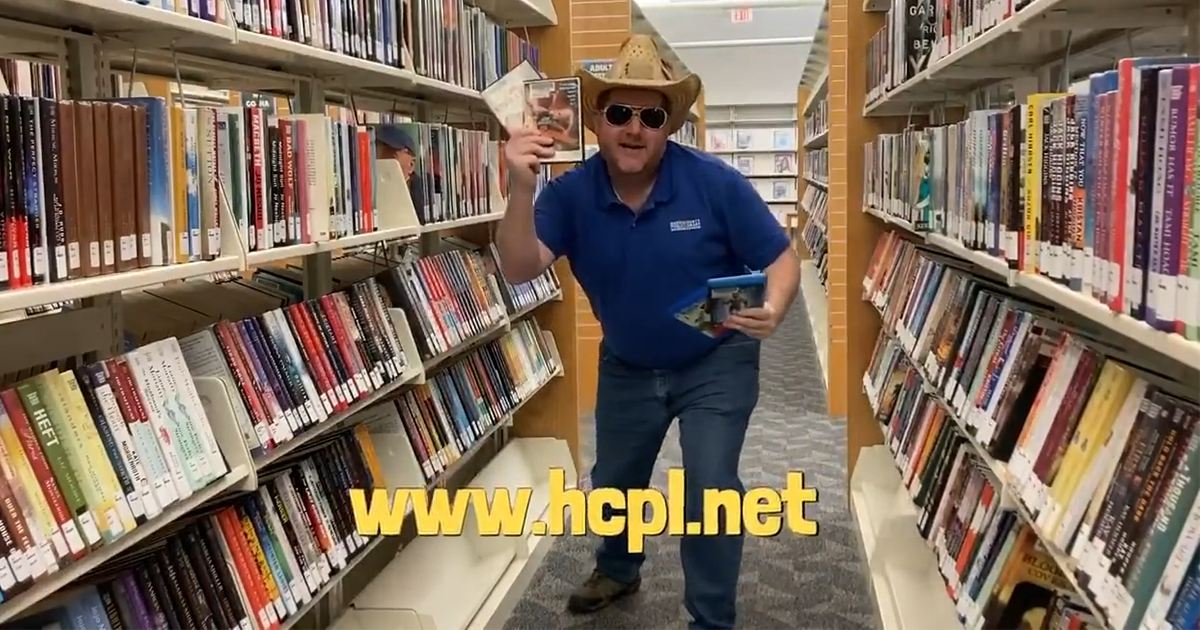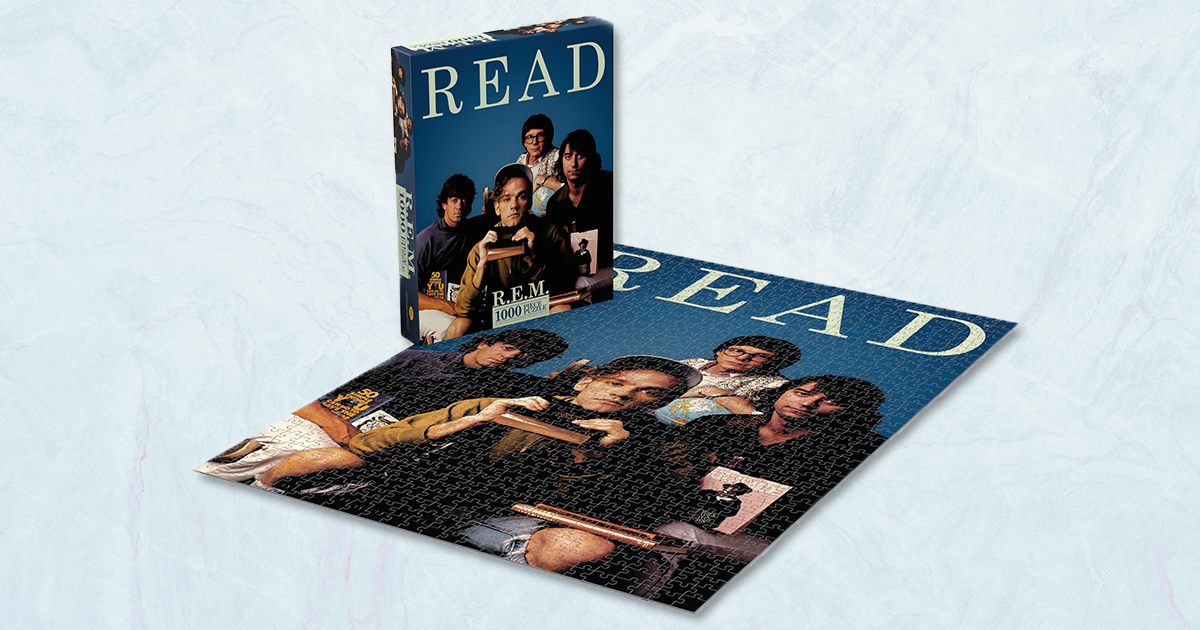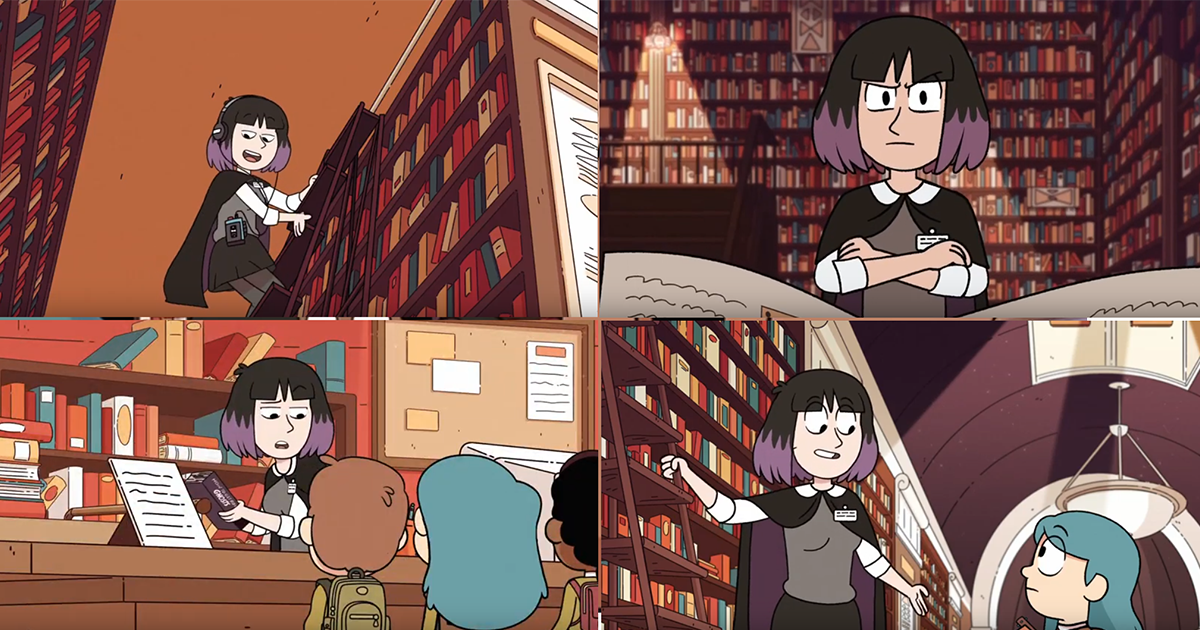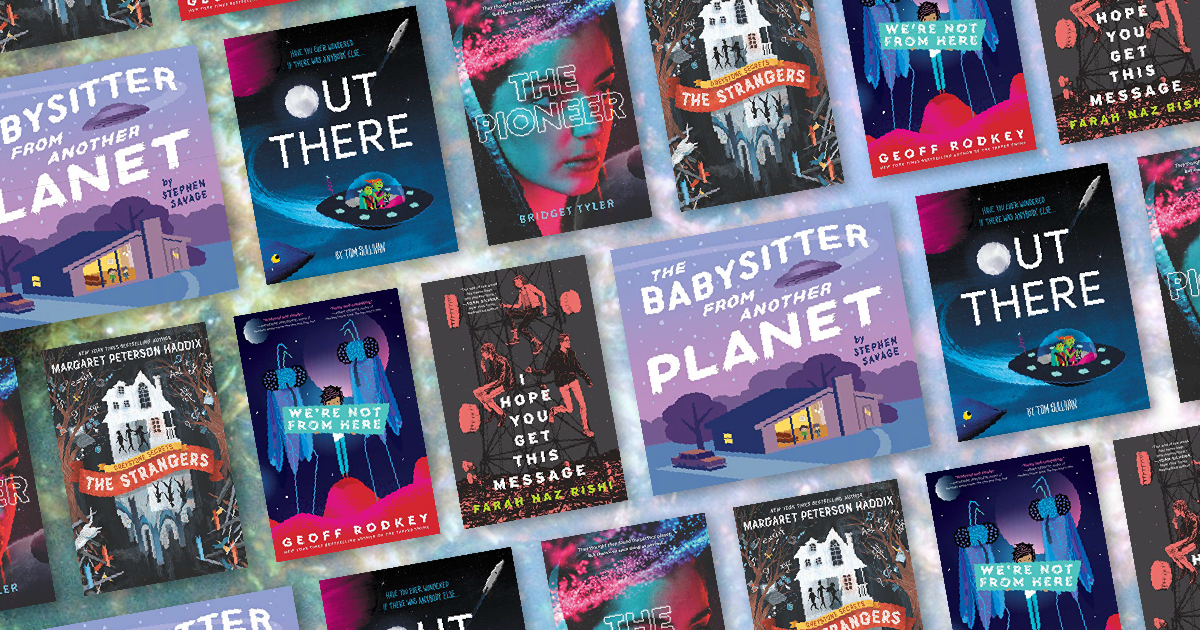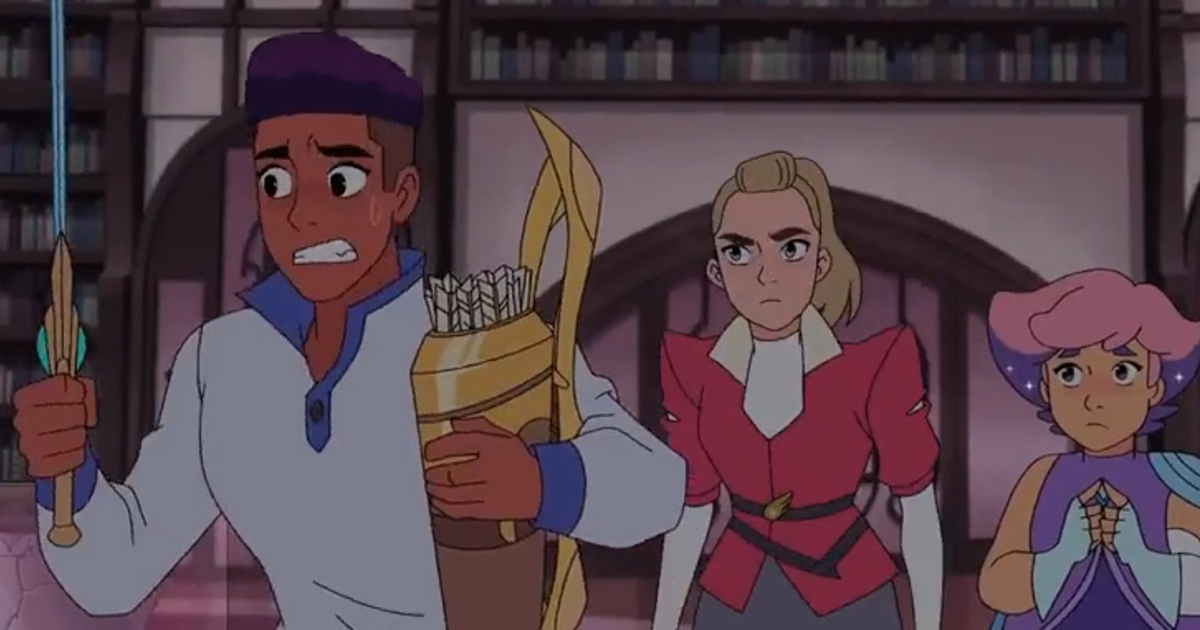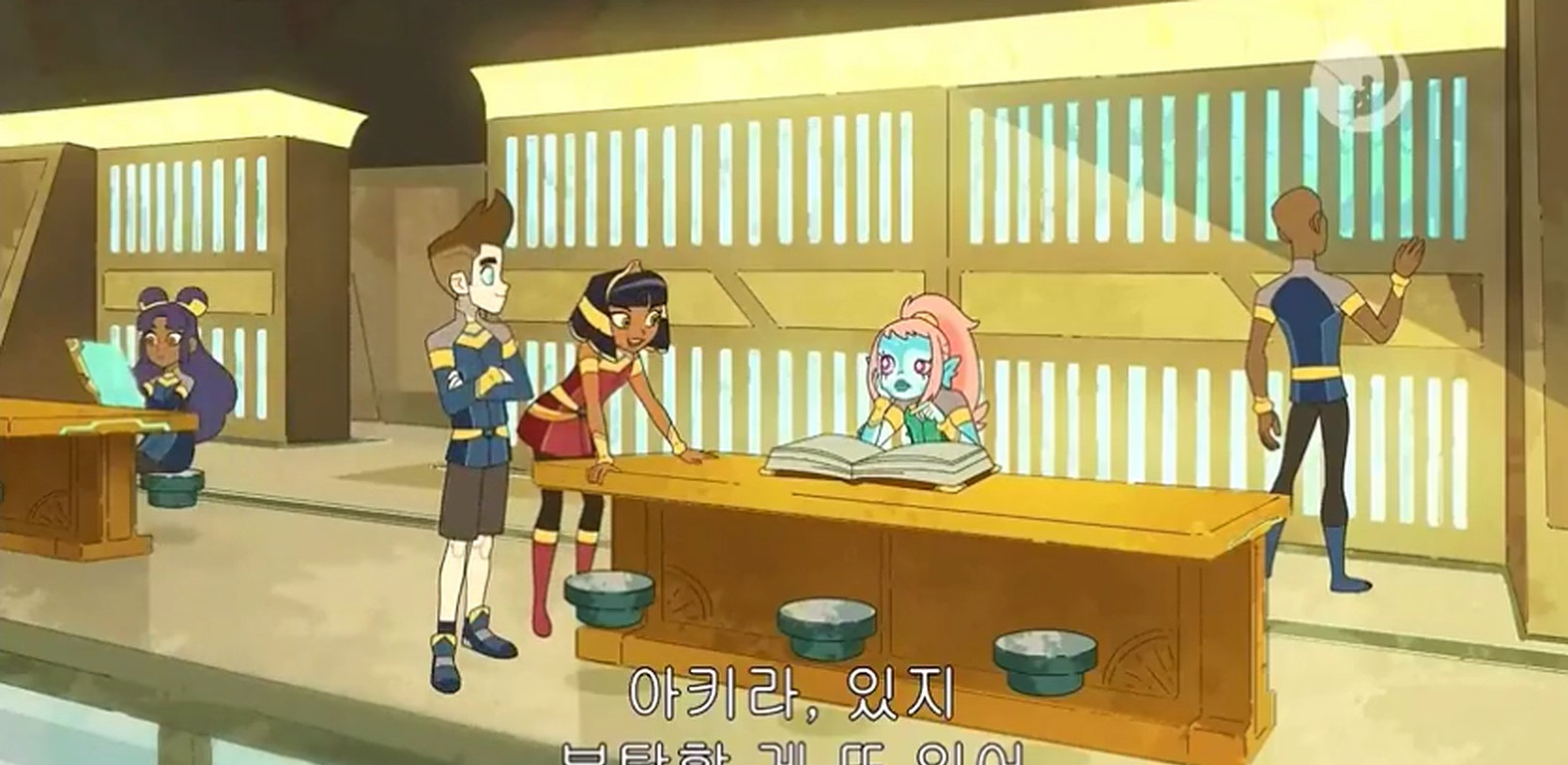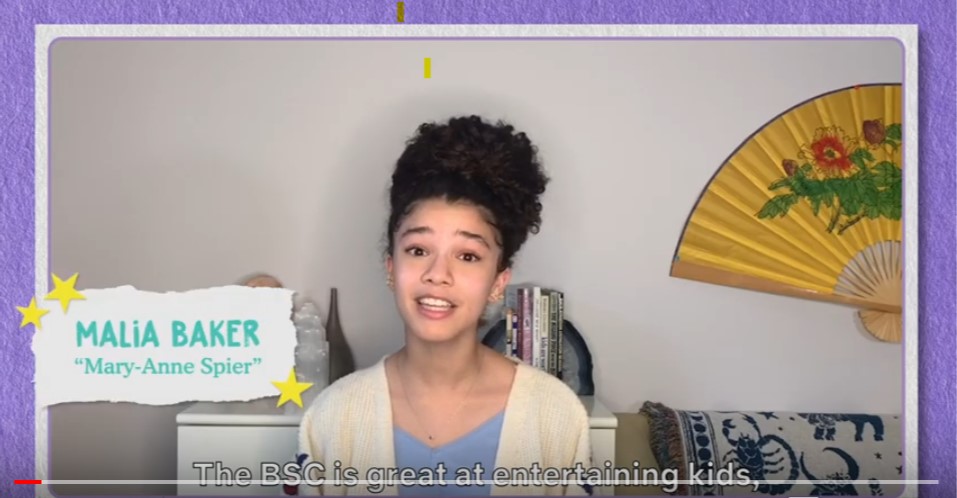This summer, a promotional video for Texas’s Harris County Public Library (HCPL) took the internet by storm, thanks to an instantly legendary character named Curbside Larry. In the clip, Larry dons a cowboy hat and aviator sunglasses to sing the praises of HCPL’s new curbside pick-up services, all with the energy and bravado of a used-car pitchman. In the dark days of the pandemic, Larry’s infectious enthusiasm brought joy to people far beyond Harris County, scoring nearly 50,000 views on YouTube and mentions in Texas Monthly and Southern Living.
In real life, Curbside Larry is actually John Schaffer, a program production specialist for HCPL’s Barbara Bush Branch Library. He recently spoke with I Love Libraries about his rise to internet fame and how his library is continuing to serve their community during COVID-19.
What’s Curbside Larry’s origin story? How did you get into character?
I have always had a soft spot those local, late night, cheap television commercials. When searching for a good way to get the message out about curbside service, it just seemed like it might be a funny choice to try and channel those guys to get out the information that we were open for curbside service.
Your name, obviously, is John—how did you decide on “Larry” for your alter ego’s name?
I wish there was a better story to this, but I just started saying “Curbside Larry” while I was writing the commercial in my head. I suppose it could have just as easily been Curbside Joe or Curbside Marvin, but for whatever the reason—“Larry” was the first name that I thought of and fortunately it works!
Did you have any idea it was going to go viral? What’s it been like appearing on the local news and getting interviewed by Southern Living?
Some of my co-workers claim to have known that it was going to be this successful, but I was just hoping to reach a few thousand views on our Facebook page. The interviews and TV appearances have been a lot of fun, although surreal might be a better word. I’m as interested in why Curbside Larry has struck a nerve with the public as everyone else, so it’s always interesting to hear from other people what their thoughts are on the sudden success. And of course, I love my library system so it’s always fun to have it as the topic of any conversation!
What are your typical job duties when you aren’t playing Curbside Larry?
I’m very fortunate that my role at HCPL allows me to work in a variety of areas on a lot of different types of projects. As a Program Production Specialist, I’m responsible for the development and implementation of programs designed to promote library services and goals. This can translate into wide range of projects. For example, I recently worked with the County Judge’s Office to create videos promoting drive-through voting, helped the Texas Library Association promote membership to their organization, and worked with Gulf Coast Reads to promote this year’s book selection—and that was just in the last few weeks! I do have a background in the performance arts so it just feels natural to draw on that experience whenever it seems appropriate.
There’s a persistent stereotype about libraries and their staff being extremely quiet and serious—do you think that’s part of why people are so delighted by the Curbside Larry character?
That’s a great point, and yes—I do think people were surprised to see a library employee making so much noise! Sure, there are a few library employees that might fit the normal stereotype, but in my experience most librarians are very funny, educated, and extremely creative in trying to find ways to better serve their community.
How have Harris County Public Library and the Barbara Bush Branch been doing during the pandemic in general
Since the beginning of the pandemic, we’ve put a tremendous amount of effort into finding new ways to serve the public safely and blend curbside with online programs and services. The success of our first online summer reading program is a testament to the creativity of everyone on the Harris County team. We’re continuing to find new ways to provide services. One example that comes to mind is “Curbside Printing”: now our patrons can have printing services available so that they can print and pick up their materials without ever entering the building.
Is there anything else you’d like the public to know about Curbside Larry or your library more generally?
HCPL is continually looking to expand the products and services that we can provide our patrons. This will come in all forms, but I definitely think you will see an increase in our online programing. Since we have been able to successfully pivot during the pandemic shutdown, I think we are only going to gain momentum and speed in regards to new and innovative services from our library system. Of course, as long there is a need promote those programs or services, Curbside Larry is ready with his hat and glasses!
For more inspiring and entertaining stories from America’s libraries, subscribe to the I Love Libraries newsletter.



